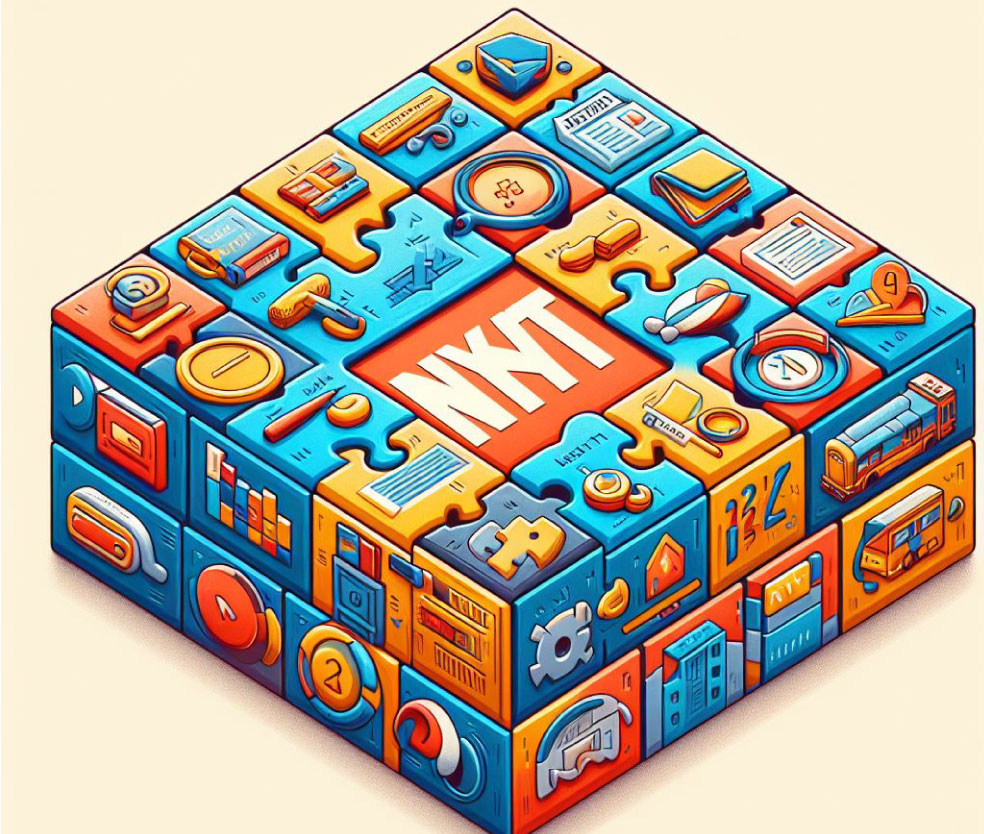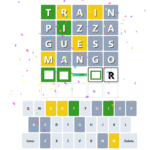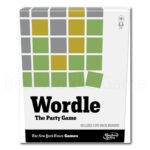[next_day_date_shortcode] NYT Letter Boxed is a popular word game from The New York Times that combines vocabulary and spatial reasoning skills. This engaging game challenges players to think creatively and solve problems while having fun.
Vocabulary and Spatial Reasoning Skills
In NYT LetterBoxed, players are not only required to come up with words but also to strategically arrange them on a grid. This unique combination of vocabulary and spatial reasoning skills sets this game apart from others. By exercising their vocabulary knowledge, players can expand their word bank while simultaneously enhancing their ability to arrange letters in a way that fits the grid.
Creative Thinking
One of the key aspects of NYT Letter Boxed is its emphasis on creative thinking. Players must think outside the box to find words that connect the given letters on the grid. This encourages them to explore various possibilities and consider different word combinations. The game prompts players to stretch their imagination and come up with innovative solutions, making it an excellent exercise for fostering creativity.
Problem-Solving
NYT Letter Boxed presents players with a puzzle-like challenge that requires problem-solving skills. As they encounter new letter combinations in each level, players must analyze the available letters and determine how they can be connected to form words within the constraints of the grid. This aspect of the game enhances critical thinking abilities by encouraging players to evaluate options, make decisions, and adapt their strategies accordingly.
The game’s progressive difficulty levels further enhance problem-solving skills as players encounter more complex grids and letter arrangements. They need to devise effective approaches to overcome these challenges, which helps sharpen their analytical thinking abilities.
Benefits Beyond Entertainment
While NYT Letter Boxed is undoubtedly an enjoyable pastime, it also offers several benefits beyond entertainment value. The combination of vocabulary expansion, spatial reasoning development, creative thinking stimulation, and problem-solving practice makes this game an excellent educational tool for individuals of all ages.
For students, playing NYT Letter Boxed can improve their language skills, enhance cognitive abilities, and boost academic performance. Adults can also benefit from the mental stimulation provided by the game, helping to maintain cognitive sharpness and prevent age-related decline.
Discovering NYT Letter Boxed
Available on Multiple Platforms
NYT Letter Boxed is a puzzle game that can be enjoyed across multiple platforms, including the web, mobile app, and print. This accessibility allows players to engage with the game wherever they are, whether it’s on their computer at home or on their phone while commuting. By offering different platforms for gameplay, NYT Letter Boxed ensures that players have flexibility and convenience in how they choose to solve puzzles.
A Wide Range of Challenging Puzzles
One of the key features of NYT Letter Boxed is its extensive collection of challenging puzzles. Each puzzle presents players with a set of letter tiles arranged in a box shape. The objective is to create words by connecting adjacent letters within the box without lifting your finger or retracing your steps. With hundreds of puzzles available, ranging from easy to difficult, players can continually test their word-building skills and expand their vocabulary.
The variety in these puzzles keeps gameplay fresh and engaging. Players will encounter different letter combinations and patterns that require them to think creatively and strategically. Whether you’re a word enthusiast looking for a mental challenge or someone who enjoys solving puzzles for leisure, NYT Letter Boxed offers an array of options to cater to various skill levels.
Addictive and Enjoyable Gameplay Experience
NYT LetterBoxed provides an addictive gameplay experience that keeps players coming back for more. The combination of challenging puzzles and intuitive mechanics creates a captivating environment where time seems to fly by as you immerse yourself in finding words within the letter boxes.
As you progress through the game, you’ll unlock new levels and achievements, providing a sense of accomplishment and motivation to keep playing. The satisfaction of successfully completing each puzzle fuels the desire to tackle even more challenging ones.
Furthermore, the game’s user-friendly interface enhances the overall enjoyment factor. Its clean design allows players to focus solely on solving puzzles without distractions or unnecessary clutter. The seamless gameplay experience, coupled with the addictive nature of the puzzles, makes NYT Letter Boxed a go-to choice for puzzle enthusiasts seeking an engaging and entertaining experience.
Mastering the Basics of Letter Boxed

Forming Words in the Grid
To excel at NYT Letter Boxed, it is crucial to learn how to form words using adjacent letters in the grid. Each letter in the grid can be connected horizontally, vertically, or diagonally to create words. By strategically selecting letters that are adjacent to each other, players can expand their vocabulary and uncover hidden word possibilities.
Importance of Common Letter Combinations
Understanding common letter combinations is key to success in Letter Boxed. Certain letter pairs or clusters frequently appear together in words. For example, the combination “th” is prevalent in English words such as “the,” “this,” and “that.” Recognizing these patterns allows players to quickly identify potential word options and maximize their scoring potential.
Strategic Thinking for Maximum Scoring
To achieve high scores in Letter Boxed, strategic thinking is essential. Players must consider multiple factors when selecting letters and forming words. They need to evaluate the length of a word, its point value based on individual letter scores, and its potential for bonus points by utilizing all four sides of the grid. Identifying uncommon or unique words can lead to higher scores as they often carry more points.
Enhancing Language Skills
Playing Letter Boxed regularly can significantly enhance language skills. As players engage with a wide range of letters and form various word combinations, they naturally expand their vocabulary and improve spelling abilities. The game encourages players to explore different word options and discover new terms they may not have encountered before. This exposure helps strengthen language proficiency over time.
Rules of the Game
Letter Boxed follows a set of rules that add structure and fairness to gameplay. The game requires players to form valid English words that consist of three or more letters using only the provided letters within the grid. Proper nouns, abbreviations, prefixes, suffixes, hyphenated words, foreign languages, and archaic words are not accepted. Players can utilize online dictionaries or word-checking tools to verify the validity of their chosen words.
Advanced Strategies for Letter Boxed
Utilize Prefixes and Suffixes
Expanding your word options in Letter Boxed can be achieved by utilizing prefixes and suffixes. By adding a few letters to the beginning or end of a word, you can create new words that fit into the puzzle. For example, if you have the letters “c,” “a,” “t,” and “s” on one side of the box, you can form words like “cats,” “acts,” or even “scats” by adding different prefixes or suffixes. This strategy allows you to maximize your word choices and increase your chances of finding valid solutions.
Experiment with Different Letter Sequences
In order to uncover hidden words within the Letter Boxed puzzle, it’s important to experiment with different letter sequences. Instead of focusing solely on forming words using adjacent letters, try combining non-adjacent letters as well. By exploring various combinations, you may stumble upon unique words that are not immediately apparent. For instance, if the box contains the letters “p,” “h,” “o,” and “n,” you could potentially discover words like “hop” or even “no.”
Develop Techniques for Efficient Problem Solving
Solving complex puzzles efficiently requires the development of specific techniques. One such technique is to identify common letter patterns that frequently appear in words. For example, certain letter combinations like “-ing” or “-tion” often occur in English words. By recognizing these patterns, you can quickly generate multiple valid solutions without wasting time on trial and error.
Another technique involves mentally visualizing possible paths within the box while considering different permutations of letters. This mental exercise helps in identifying potential word formations more rapidly.
It’s crucial to prioritize solving one side of the box before moving on to others. Focusing on a single side allows for better concentration and increases the likelihood of finding longer words.
By implementing these techniques, you can enhance your problem-solving skills and become more adept at tackling challenging Letter Boxed puzzles.
Community and Sharing in Letter Boxed
Connect with other players
In the world of Letter Boxed, you don’t have to solve puzzles alone. You can connect with other players through online communities and forums dedicated to this popular word game. These platforms provide a space where players can come together, share their experiences, and discuss various aspects of the game.
Share tips, tricks, and strategies
One of the benefits of joining these online communities is the opportunity to exchange tips, tricks, and strategies for solving challenging puzzles in Letter Boxed. Players can share their insights on how to navigate through the different levels by utilizing specific letter combinations or finding creative solutions. This sharing of knowledge helps everyone improve their gameplay skills.
Participate in friendly competitions
If you enjoy a bit of friendly competition, these communities also offer opportunities to participate in challenges and compare scores with friends or fellow players. You can engage in timed competitions where you race against the clock to find words within the given letters. It adds an exciting element to the game as you strive to beat your personal best or outscore your friends.
Compare scores with friends
Letter Boxed allows you to compete directly with your friends by comparing scores. By connecting your accounts or exchanging usernames within these communities, you can easily track each other’s progress and see who has achieved higher scores or completed more levels. This healthy rivalry keeps the game engaging and motivates players to keep improving.
Expand your collection of words
Being part of an active community not only helps you improve your gameplay but also expands your collection of words. As players share unique words they’ve discovered during their gameplay experience, it broadens your vocabulary and enhances your ability to identify uncommon word combinations. The diverse range of perspectives within these communities ensures that there’s always something new to learn.
Wordle Game
Guess the word (5-letter word)
Seek help when needed
Sometimes even the most seasoned players encounter challenging puzzles that leave them stumped. In these situations, online communities and forums can be a valuable resource for seeking help. You can post specific puzzles or sections of the game that you’re struggling with and ask for assistance from other players who may have already solved them. It’s a supportive environment where everyone is eager to lend a helping hand.
The Broader World of NYT Word Games
Explore other word games offered by The New York Times
In addition to Letter Boxed, The New York Times offers a diverse range of word games that can challenge and entertain word enthusiasts. These games provide an opportunity to expand your linguistic skills while having fun with various puzzles.
Discover unique challenges like Spelling Bee and Crosswords
One popular game is the Spelling Bee. In this game, players are given a set of letters and must create as many words as possible using those letters. The challenge lies in finding the pangram, which is a word that uses all the given letters. It requires both creativity and vocabulary knowledge to excel in this game.
Another beloved classic is the crossword puzzle, which has been a staple in newspapers for decades. The New York Times offers daily crossword puzzles that vary in difficulty level, from easy Monday puzzles to more challenging ones towards the end of the week. Crossword puzzles not only test your knowledge but also improve your problem-solving and critical thinking skills.
Expand your linguistic skills while having fun with various puzzles
Engaging with these word games can help you enhance your vocabulary, improve spelling abilities, and boost cognitive function. By challenging yourself regularly with these puzzles, you’ll be exposed to new words and their meanings, expanding your language repertoire.
Moreover, playing word games can be an enjoyable way to relax and unwind after a long day. They offer a mental workout that stimulates brain activity while providing entertainment at the same time.
For example, solving crossword puzzles encourages lateral thinking as you try to find connections between different clues. It requires you to think flexibly and consider multiple possibilities before arriving at the correct answer.
Exploring Wordle and Its Features
Learn about Wordle, another popular word game from The New York Times
Wordle is a captivating word puzzle game that has gained popularity among players of all ages. Developed by The New York Times, this challenging word game puts your vocabulary and spelling skills to the test. It offers an exciting and interactive way to enhance your language abilities while having fun.
Uncover the rules and mechanics of this addictive puzzle game
In Wordle, the objective is simple: you must guess a five-letter secret word within six attempts. Each time you make a guess, the game provides feedback in the form of colored squares. A yellow square indicates that you have guessed a correct letter in the right position, while a gray square means that you have guessed a correct letter but in the wrong position. If there is no square displayed, it means that your guess does not contain any correct letters.
The challenge lies in using deductive reasoning and process of elimination to narrow down possible words based on the feedback received from each guess. As you progress through the game, you will need to strategically choose words that share similar letters or patterns with previous guesses to maximize your chances of success.
Enhance your vocabulary while trying to guess the secret word
One of the key benefits of playing Wordle is its ability to expand your vocabulary. With every guess you make, you are exposed to new words and their spellings. This exposure helps reinforce existing knowledge while introducing new terms into your repertoire.
Moreover, Wordle encourages players to think critically about word structure and patterns. By analyzing which letters appear in correct positions or are present but misplaced, players can develop an understanding of common letter combinations or sequences that occur frequently in English words.
As you continue playing Wordle regularly, you may find yourself becoming more adept at identifying potential words based on limited information—a valuable skill applicable not only in games but also in real-life scenarios that require problem-solving and critical thinking.
Diving into Other NYT Logic Puzzles
Delve into a variety of logic puzzles available from The New York Times
The New York Times (NYT) offers an array of captivating logic puzzles that will put your critical thinking abilities to the test. Beyond word games, they provide a diverse range of brain-teasing challenges to keep you engaged and entertained. Whether you’re a puzzle enthusiast or simply looking for a new way to exercise your mind, these puzzles are sure to offer hours of enjoyment.
One popular choice is Sudoku, a number-based puzzle that requires you to fill in a 9×9 grid with digits from 1 to 9. The goal is to ensure that each row, column, and 3×3 box contains all the numbers without any repetition. With varying levels of difficulty available, Sudoku allows both beginners and seasoned solvers to find their preferred challenge level.
Another intriguing option is KenKen, which combines mathematical operations with logical deduction. In this puzzle, you are presented with a grid divided into smaller cages. Each cage contains a target number and an arithmetic operation (+, -, ×, ÷). Your task is to fill in the cells within each cage with numbers that satisfy the given operation and reach the target number without repeating any digit within the same cage.
For those who enjoy spatial reasoning and visual puzzles, there’s also Letterboxed. This unique game presents nine letters arranged in a 3×3 grid. The objective is to create words by connecting adjacent letters in any direction while using each letter only once per word. The challenge lies in finding as many valid words as possible while exploring different paths within the letter grid.
In addition to these well-known puzzles, NYT offers other exciting options like Setoku (a fusion of Sudoku and Set), Tents (where you place tents on trees according to specific rules), and more. These puzzles cater to different interests and skill levels, ensuring there’s something for everyone to enjoy.
Solving logic puzzles not only provides entertainment but also offers numerous cognitive benefits. They enhance critical thinking skills, improve problem-solving abilities, boost concentration and focus, and even promote relaxation by engaging the mind in a challenging yet enjoyable activity.
So, whether you’re seeking a mental workout or simply want to unwind with an engrossing puzzle, The New York Times’ collection of logic puzzles is worth exploring. With their wide variety of options and varying difficulty levels, you can embark on a stimulating journey that will keep your brain sharp and entertained.
Tips and Tools for Enhancing Gameplay
Helpful Resources for Solving NYT Letterboxed Puzzles
To enhance your gameplay experience with NYT Letterboxed, there are several helpful resources you can utilize. Word finders and anagram solvers can be valuable tools in finding words from the given set of letters. These resources assist players in discovering hidden words and expanding their vocabulary. By inputting the available letters into these tools, you can quickly generate a list of possible words, helping you progress through the puzzle more efficiently.
Time-Saving Techniques to Improve Solving Speed
Improving your solving speed is key to becoming a skilled player in NYT Letterboxed. One technique is to start by identifying common prefixes and suffixes within the given letters. This knowledge allows you to create multiple words by simply adding or removing a few letters. Focusing on shorter words first can help you uncover potential longer words hidden within them.
Another time-saving technique is to approach the puzzle systematically. Start by searching for words that contain high-value letters such as “Q,” “X,” or “Z.” These letters often carry more points, so incorporating them into your word choices can significantly boost your score. Furthermore, paying attention to vowel-consonant patterns can guide your search for potential word combinations.
Staying Updated with Puzzle-Solving Strategies from Experts
To further enhance your gameplay skills in NYT Letterboxed, staying updated with the latest puzzle-solving strategies from experts is essential. Many online communities and forums provide valuable insights and discussions about different approaches to solving puzzles effectively.
Engaging with these communities allows you to learn from experienced players who share their tips, tricks, and techniques for maximizing points and improving solving speed. You may discover innovative strategies that challenge conventional thinking or uncover lesser-known word combinations that give you an edge over other players.
In addition to online communities, following expert puzzlers on social media platforms or subscribing to puzzle-related newsletters can provide you with regular updates on the latest strategies and techniques. These resources often include detailed explanations of solving methods, offering valuable guidance to help you navigate through even the most challenging NYT Letterboxed puzzles.
By utilizing helpful resources like word finders and anagram solvers, implementing time-saving techniques, and staying updated with puzzle-solving strategies from experts, you can enhance your gameplay in NYT Letterboxed. These tips and tools will not only improve your solving speed but also expand your vocabulary and boost your overall score.
Conclusion on NYT Letter Boxed Mastery
Reflect on your journey of mastering NYT Letter Boxed
Throughout your journey of mastering NYT Letter Boxed, you have undoubtedly honed your skills in wordplay, problem-solving, and critical thinking. By strategically arranging letters to form words and uncovering hidden connections, you have expanded your vocabulary and sharpened your mental acuity. Each solved puzzle has been a testament to your perseverance and determination.
Emphasize the benefits of playing word games for mental stimulation
Playing word games like NYT Letter Boxed offers more than just entertainment; it provides numerous benefits for mental stimulation. Engaging in such activities exercises your brain, enhances cognitive abilities, and improves memory retention. As you navigate through the challenging puzzles, you are constantly activating different areas of your brain responsible for language processing, pattern recognition, and problem-solving. This mental workout can contribute to improved focus, increased creativity, and enhanced linguistic skills.
Word games also offer an opportunity for relaxation and stress relief. They provide a break from the daily grind by allowing you to immerse yourself in a world of words and puzzles. The sense of accomplishment that comes with solving a particularly challenging puzzle can boost confidence and provide a well-deserved sense of satisfaction.
Encourage readers to continue exploring and enjoying the world of word puzzles
As you continue to explore the world of word puzzles, there are countless opportunities to expand your horizons. Apart from NYT Letter Boxed, there are various other word games available that offer unique challenges and gameplay mechanics. Crossword puzzles, anagrams, cryptograms, and word searches are just a few examples of the vast array of word games waiting to be discovered.
By engaging in these activities regularly, you can continue to sharpen your linguistic abilities while having fun at the same time. Whether you choose to play alone or with friends and family, word games provide an excellent platform for bonding over shared interests and friendly competition.
So, keep exploring the world of word puzzles, challenge yourself with new games, and enjoy the mental stimulation they offer. The journey of mastering NYT Letter Boxed is just the beginning of an exciting adventure into the realm of words and puzzles.
In conclusion, mastering NYT Letter Boxed is a testament to your dedication and problem-solving skills. The benefits of playing word games extend beyond mere entertainment, offering mental stimulation, improved cognitive abilities, and stress relief. As you continue to explore the world of word puzzles, you open doors to new challenges and opportunities for personal growth. So, embrace the joy of wordplay and let your love for language flourish.
Frequently Asked Questions
What is NYT Letter Boxed?
NYT Letter Boxed is a word puzzle game offered by The New York Times. It challenges players to create words using a set of letter tiles arranged in a box. The goal is to use all the letters and connect them in a continuous path without lifting the finger from the screen or repeating any tiles.
How can I improve my gameplay in NYT Letter Boxed?
To enhance your gameplay in NYT Letter Boxed, focus on expanding your vocabulary, experimenting with different letter combinations, and utilizing strategic thinking. Take time to explore word patterns, consider prefixes and suffixes, and make use of online tools like anagram finders or word generators for additional assistance.
Are there any advanced strategies for playing NYT Letter Boxed?
Yes, there are advanced strategies you can employ to excel at NYT Letter Boxed. Some tactics include identifying common letter combinations, prioritizing longer words for higher points, and analyzing the available vowels and consonants to maximize word options. Paying attention to the positioning of certain letters can help unlock new possibilities.
Can I share my progress or interact with others in NYT Letter Boxed?
While NYT Letter Boxed does not have built-in social features, you can engage with fellow players through online forums or communities dedicated to word games. Sharing tips, discussing strategies, and celebrating achievements with other enthusiasts can provide valuable insights and foster a sense of community around the game.
Apart from NYT Letter Boxed, what other word games are offered by The New York Times?
The New York Times offers an array of engaging word games beyond NYT Letter Boxed. Some notable examples include Wordle—an addictive guessing game where players attempt to decipher a five-letter target word—and various logic puzzles such as Sudoku and Crosswords that challenge your problem-solving skills while incorporating language elements.
- Phoodle Hint Today (2024) ANSWER UPDATED 🔥In order to solve today’s Phoodle puzzle, which is set for, we are providing some useful hints that may assist you. Although the puzzle can be difficult to solve, the following clues may help limit the possible solutions.Phoodle is a fun and addictive game that challenges players to guess a five-letter food-related term in six … Read more
- Octordle Daily Sequence Answer Today 🐣Is your mind prepared for a mental workout with Octordle’s daily sequence puzzle? For today’s solution to improve your puzzle-solving abilities, look no further. We provide professional techniques and clues just for fans of this well-liked word game. Utilize our insider knowledge to stay one step ahead of the game. Important lessons learned Introduction to … Read more
- Phoodle Hints And Answer Today 29 FebruaryPuzzle fans all over the world have taken an interest in the well-known Answer game Phoodle. The daily tips feature on Phoodle is one of the main things that attracts users so much. Players can use these tips as a starting point to assist them identify the correct words and make their way through the … Read more
- 28 Feb – NyTimes Wordle Today Hint And AnswerSPOILER WARNING: 28 February Wordle #984 is out! If you’re seeking Wordlehints and Answers without spoilers, you’re in the right place. Let’s delve into strategies to ace today’s Wordle NY Times and elevate your gameplay.In today’s Wordle challenge, which was published in The New York Times, participants are asked to solve the puzzle of a … Read more
- NyTimes Wordle TodaySPOILER WARNING: Wordle #983 is out! If you’re seeking hints and Answers without spoilers, you’re in the right place. Let’s delve into strategies to ace today’s Wordle NY Times and elevate your gameplay.Today’s Wordle challenge, featured in The New York Times, invites players to unravel the mystery of a five-letter word. As enthusiasts eagerly anticipate … Read more





